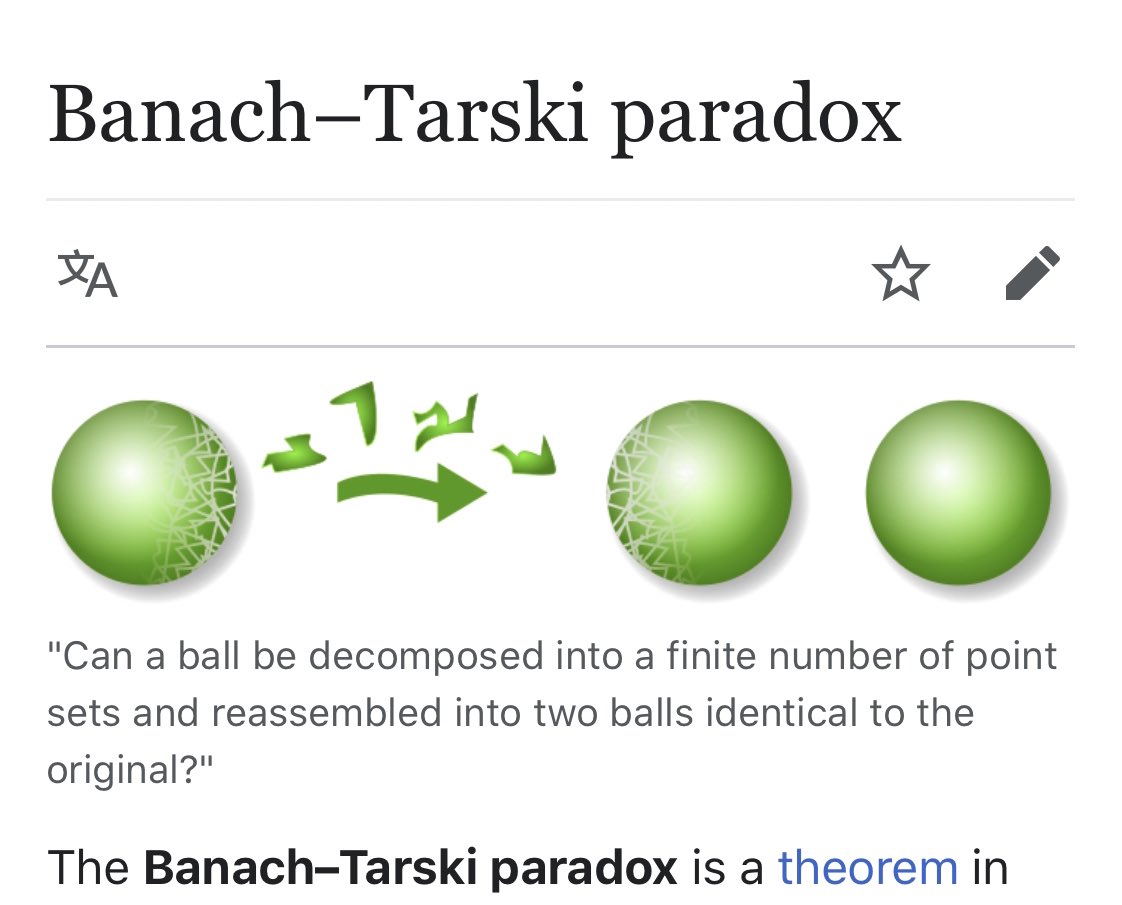

The Banach-Tarski Paradox:
The Banach-Tarski Paradox is a mathematical theorem that states that a solid ball in three-dimensional space can be divided into a finite number of disjoint subsets, which can then be reassembled using rigid motions (translations and rotations) to form two solid balls of the same size as the original.
This paradox was first formulated by the Polish mathematician Stefan Banach and his student Alfred Tarski in 1924. It challenges our intuitive understanding of geometry and the notion of volume conservation. The paradox relies on the concept of non-measurable sets, which are subsets of space that cannot be assigned a well-defined measure (such as volume) using conventional methods.
To understand the paradox, let's consider a simplified version using a two-dimensional analogy. Imagine a unit square in the plane. According to the Banach-Tarski Paradox, it is possible to divide this square into a finite number of subsets, and then rearrange these subsets to form two identical copies of the original square. This seems counterintuitive because we would expect that the total area of the two squares combined should be twice the original area.
The key to understanding this paradox lies in the fact that the subsets obtained after the division are not ordinary sets. They are so-called non-measurable sets, which do not have a well-defined measure. This means that we cannot assign a finite length, area, or volume to these sets using conventional measurement techniques.
The proof of the Banach-Tarski Paradox relies on advanced mathematical concepts from set theory, such as the Axiom of Choice and the concept of equidecomposability. These concepts allow for the creation of non-measurable sets and the rearrangement of these sets using rigid motions.
It is important to note that the Banach-Tarski Paradox does not violate any physical laws. It is purely a mathematical result that challenges our intuitive understanding of space and volume. In reality, the paradox cannot be physically realized because it relies on the existence of non-measurable sets, which are purely mathematical constructs.
The Banach-Tarski Paradox has far-reaching implications in mathematics and has led to the development of new branches of research, such as the study of paradoxical decompositions and non-measurable sets. It also highlights the importance of rigor and precision in mathematical reasoning, as our intuitive understanding of space and volume may not always align with mathematical reality.
References:
1. Banach, S., & Tarski, A. (1924). Sur la décomposition des ensembles de points en parties respectivement congruentes. Fundamenta Mathematicae, 6, 244-277.
2. Stan Wagon. (1993). The Banach-Tarski Paradox. Cambridge University Press.
3. Grzegorz Tomkowicz, Janusz Wagon. (2016). Banach-Tarski Paradox. In The Princeton Companion to Mathematics. Princeton University Press.
Related Posts
© 2024 Invastor. All Rights Reserved

User Comments
User Comments
There are no comments yet. Be the first to comment!